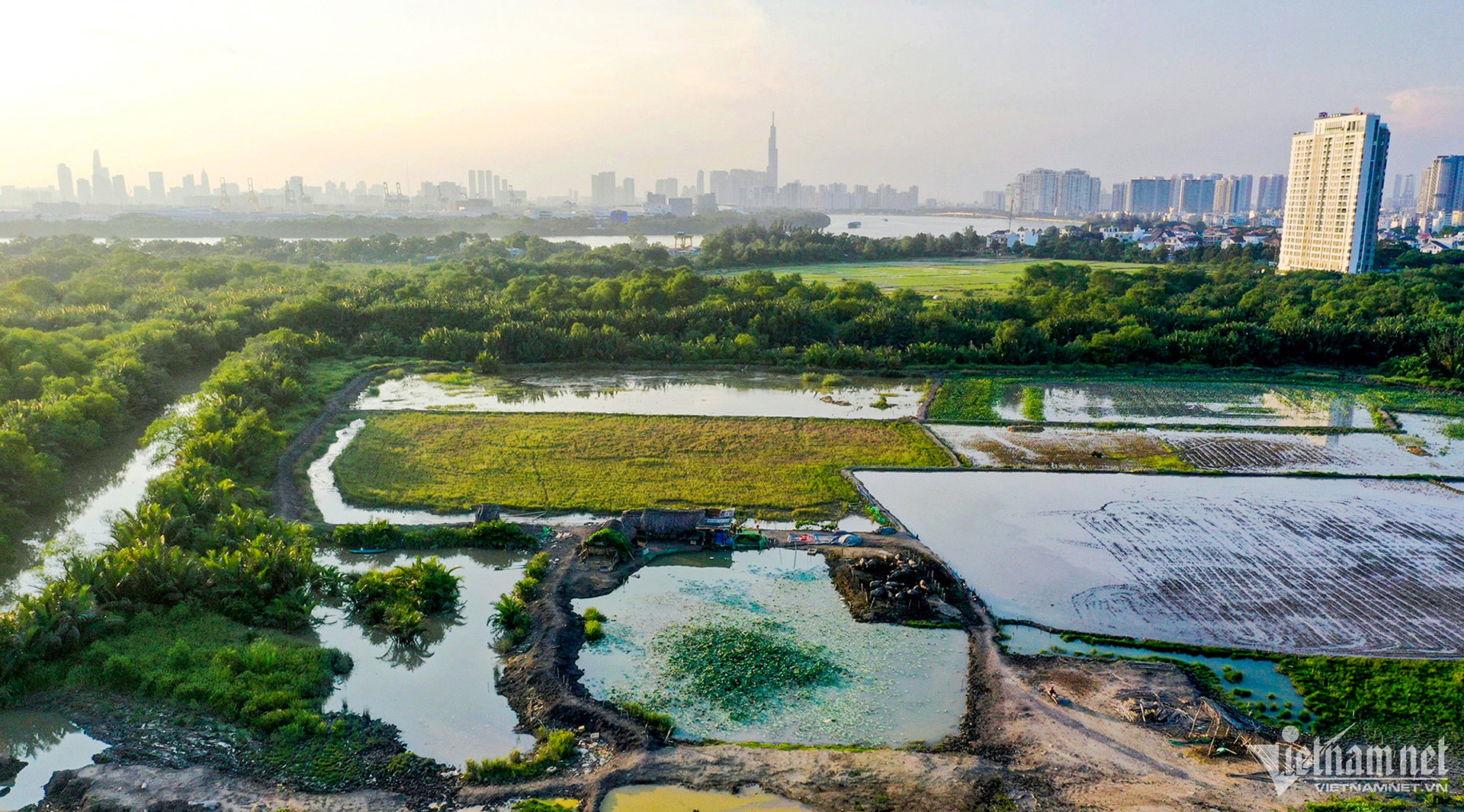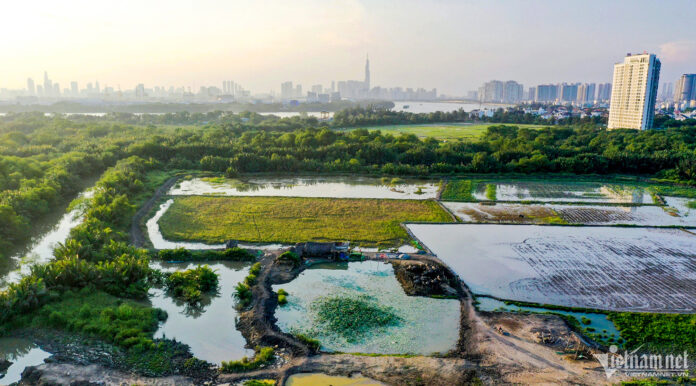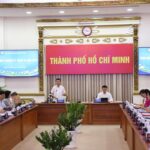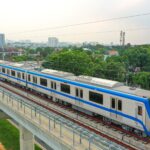On October 23, the People’s Committee of Ho Chi Minh City issued a decision on regulations for using a certain area of agricultural land for the construction of structures directly serving agricultural production in the city.
These regulations apply to agricultural land plots that have been granted certificates of land use rights and still have valid durations. In addition, the area of agricultural land being used must be 500 square meters or larger, comprising one or more contiguous land plots owned by the same individual or organization.
The ratio of the area for constructing structures directly serving agricultural production is a maximum of 1% of the total agricultural land area but does not exceed 50 square meters. The structure is limited to one story, with a maximum roof height of 5 meters, and no basement is allowed.

From now on, Ho Chi Minh City residents are permitted to build structures for agricultural production on agricultural land. Photo: Anh Phương |
In terms of structure, the construction must be semi-permanent. Specifically, walls can be made of bricks or lightweight materials; columns can be made of bricks, steel, or iron; and the roof must be made of lightweight materials.
In addition to requirements that do not affect public works, according to the regulations, investors of structures directly serving agricultural production must unconditionally agree to dismantle the structures without compensation when the duration of existence expires or when requested by state agencies, or when the agricultural land plot is converted for other purposes.
These regulations come into effect from today (October 23) and do not apply to rice-growing land, as the area for constructing structures directly serving agricultural production on rice-growing land is governed by a separate decree.
Anh Phương
Why Are Businesses Reluctant to Take Out Loans Despite Their Financial Constraints?
“Many businesses are choosing to forego additional loans and focus on generating revenue through sales alone. This strategy aims to avoid increased costs associated with borrowing, allowing them to reinvest in production and keep their operations running smoothly.”
Unlocking Transit-Oriented Development: 11 Strategic Locations in Ho Chi Minh City
Introducing 11 Transit-Oriented Development (TOD) sites strategically located along the Metro 1 and Metro 2 lines, as well as the Ring Road 3 corridor. These sites offer unparalleled potential for integrated transportation and urban development, creating vibrant, connected communities. With easy access to rapid transit, these locations are primed for transformation into bustling hubs that seamlessly blend work, life, and play. Imagine vibrant neighborhoods where residents can effortlessly commute, enjoy convenient amenities, and experience a truly integrated urban lifestyle. These 11 TOD sites are the future of urban development, bringing together the best of connectivity, sustainability, and liveability.
Unlocking the Keys to Success: Mastering the Art of Unlocking Full Financial Potential for Ho Chi Minh City’s Two Major Projects
The Infrastructure Committee has pledged to disburse 100% of the allocated funds by the end of 2024, provided that local authorities finalize compensation plans by December 15th.











![[Photo Essay]: Experts, Managers, and Businesses Unite to Forge a Path Towards Sustainable Green Industry](https://xe.today/wp-content/uploads/2025/07/z678592918-150x150.jpg)


![[Photo Essay]: Experts, Managers, and Businesses Unite to Forge a Path Towards Sustainable Green Industry](https://xe.today/wp-content/uploads/2025/07/z678592918-100x70.jpg)






